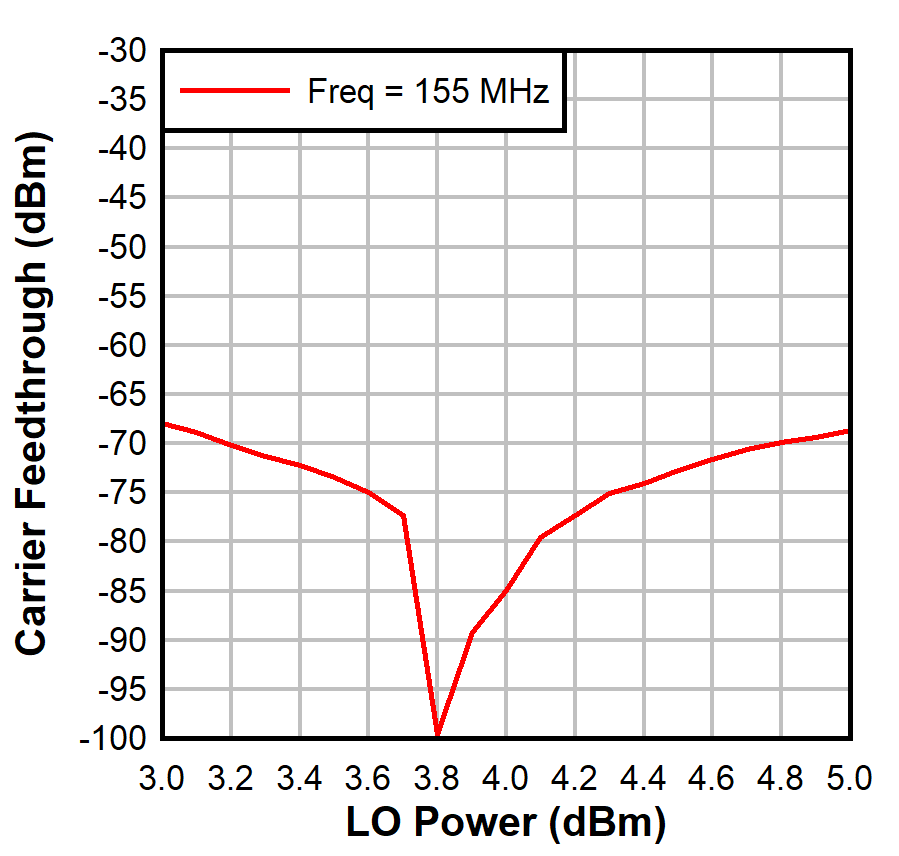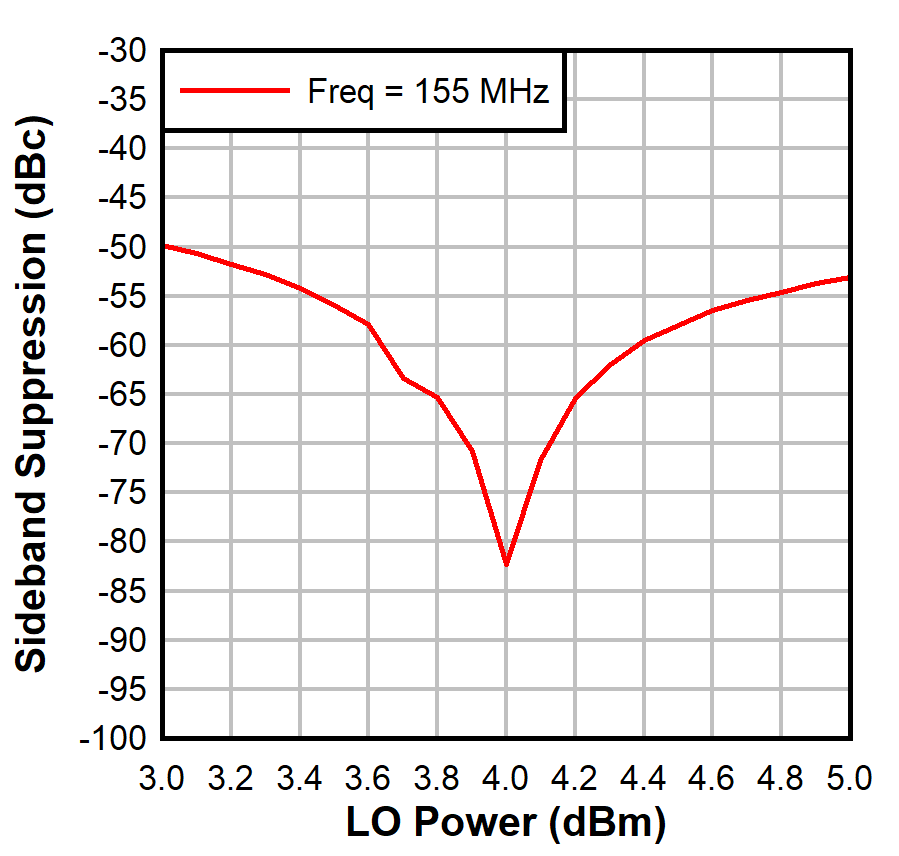SLOA313 May 2021 AFE7070 , AFE7071
2.3 Variation Over LO Drive Level
LO drive variation also may distort suppression performance. This parameter does indeed impact performance, especially sideband suppression. The nominal LO drive is 4 dBm. Figure 2-7 and Figure 2-8 show the variation of the CF and SBS performance with respect to drive level varying from 3 to 5 dBm. This is actually a sensitive variable showing that suppression performance degrades 15 to 30 dB from the optimum point with just a ±1 dB drive level variation.
 Figure 2-7 CF vs LO Drive
Figure 2-7 CF vs LO Drive Figure 2-8 SBS vs LO Drive
Level
Figure 2-8 SBS vs LO Drive
LevelLO drive level sensitivity is particularly burdensome because variations in the LO drive are difficult to predict and measure. The synthesizer device providing the LO signal is subject to its own variation over frequency, power supply, and temperature. It is difficult to accurately predict or measure the LO signal in real time to adjust for any variation over operating conditions. The better approach is to select an LO synthesizer that inherently has little variation in output power for environmental conditions. For the actual product LO, the LMX2572LP synthesizer plus harmonic filter is recommended. The LMX2572 has minimal variation in LO drive strength over temperature and power supply and consumes low power. It is an ideal candidate.